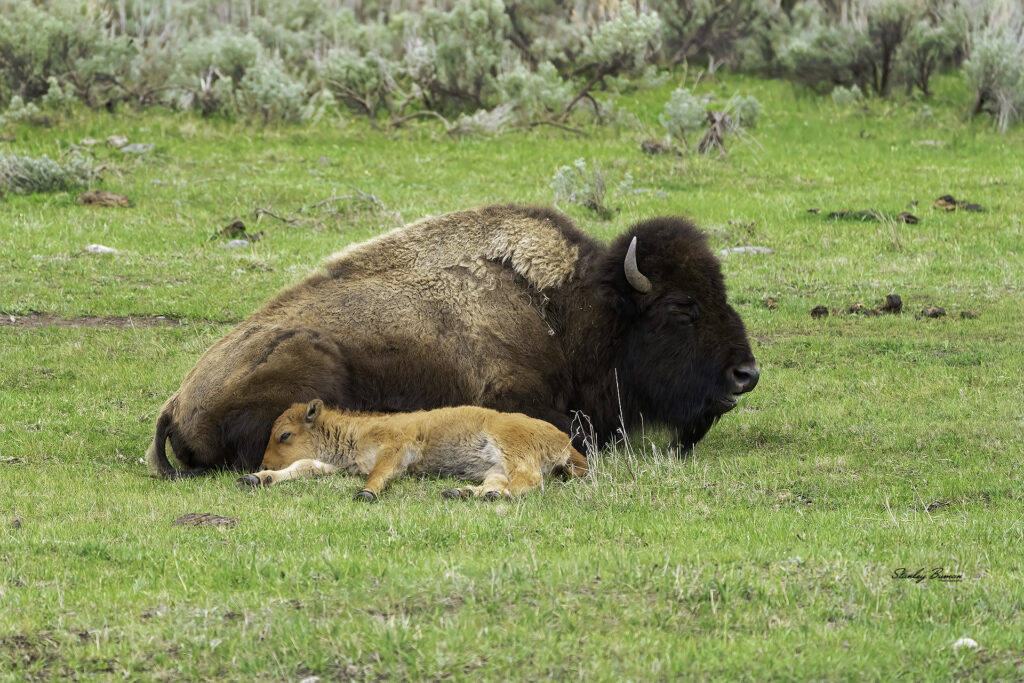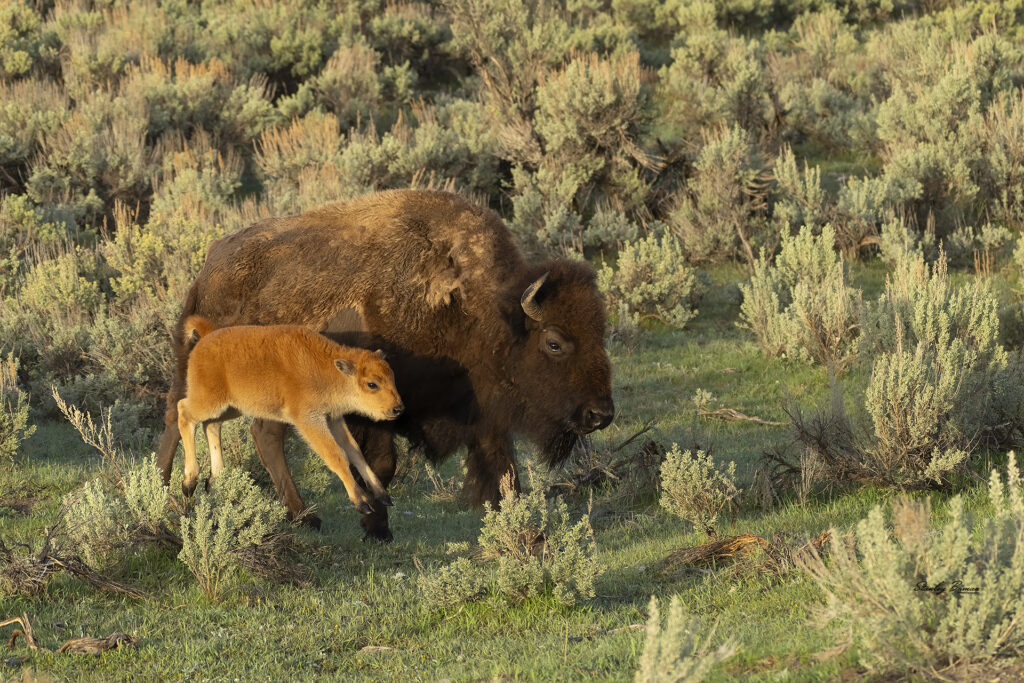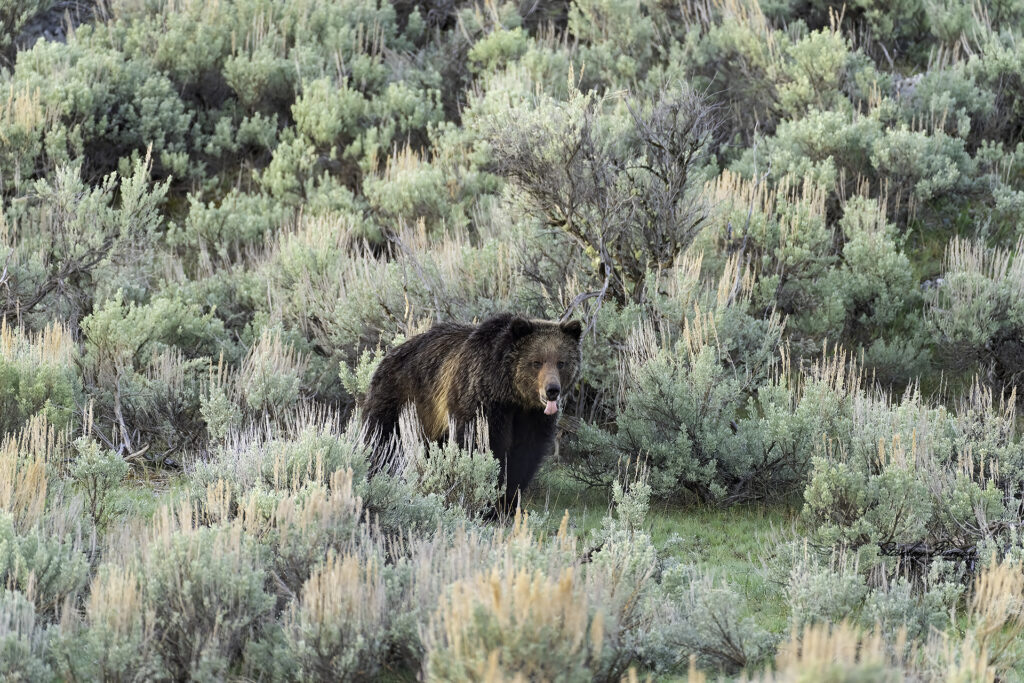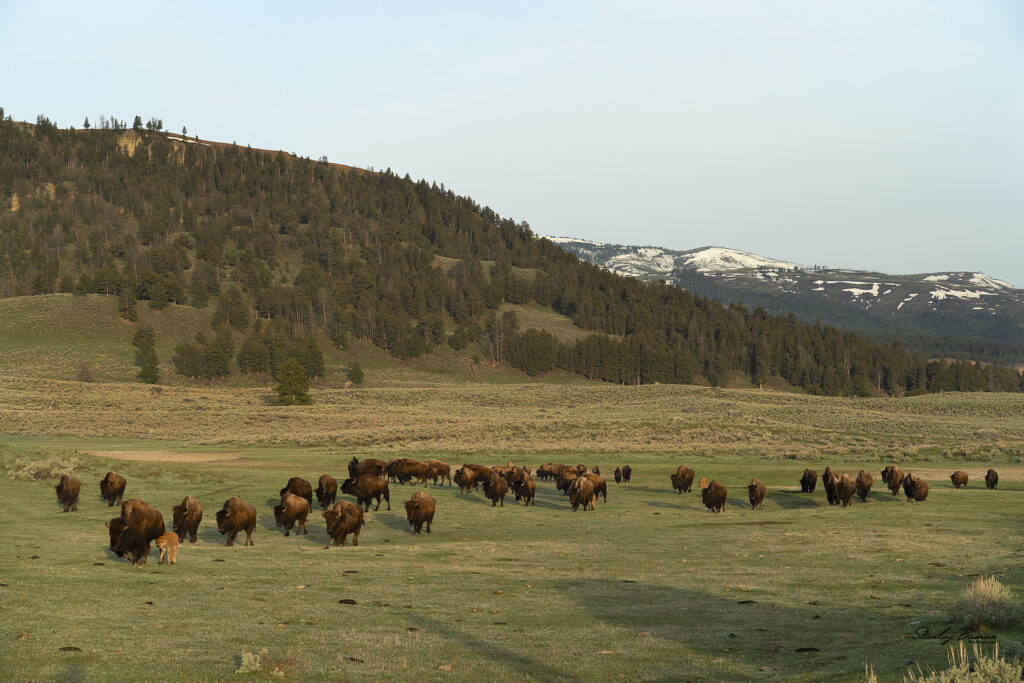Thanks to a place we call Yellowstone National Park, Bison still roam in the United States. Between hunting and military actions, Bison were hunted to near extinction in the late 1800s. By the early 1900s, only about 23 Bison remained in the park. That is a far cry from the estimated 30 – 60 million Bison that roamed North America prior to European settlement. The park was the only refuge for a continuous wild free-roaming herd.
Spring is a great time to visit the park and see baby Bison, especially late April and early May. Bison calves may be the easiest newborn animal to see.

The calves can keep up with the very protective cow within a couple of hours of birth.

Of course, not all calves make it to maturity. Even though the cows are very protective, occasionally, a predator (including the Grizzly Bear) snatches a calf to feed itself and/or its young.
During my first evening in the northern part of the park, I saw a lot of Bison out in the Lamar Valley. I noted their location and decided to spend the night in Gardiner, MT. The next morning, I was on the road by 5:00 a.m. and headed out to see the Bison. They had moved during the night. But I did see a Grizzly Bear where they had been. Another photographer told me that he had seen the bear feeding on some small carcass and he thought maybe it was a Bison calf.

Traveling further, I came across a herd of Bison on-the-move. They were moving away from where I had seen the bear. I can’t be certain that the Bison were deliberately moving away from the bear but it made sense to me that they were putting some distance between their themselves and the large predator.

Fortunately, Yellowstone served as an early refuge for Bison. Because of this, we are still able to travel to the park to see the offspring of that remnant herd. This is truly a wonderful success story in saving a species from extinction.
If you haven’t been to Yellowstone National Park, put it on your bucket list and enjoy the Bison. Just don’t try to pet them. They are wild animals. So far in 2025, Bison have gored two careless tourists. Don’t become a statistic.

GREAT JOB Stan!
Thanks Gene.
Great post Stanley.
Thanks Tim.
Thanks Stan, Especially liked the photo with baby bison jumping along with the mother. I thought of the rhyme many mothers have probably said to their babies, ” Jump for glee, jump for joy, jump because you are a boy! ( Yes, I also said likewise for my girls!) Looks like you are enjoying your self. Take care
Sue, I really liked watching the Bison calves. Even those a day or two old were quite active.
As usual, you caught some really good photo’s. About 60 years ago, I met a fellow who farmed near Rippey, Iowa. He would go out West each fall to buy calves and yearlings to put in his feedlot. One year they brought back a young female bison and put her in with the cattle, after 2 years she started to breed with the bull and would drop a healthy calf each year. I am not sure how long it lived, but he warned me, even though they had owned her for several years, she was still a wild animal…..Myron
I believe it. My Uncle raised Bison for awhile. There were a lot of fences damaged as well as vehicles used to gather up the strays.